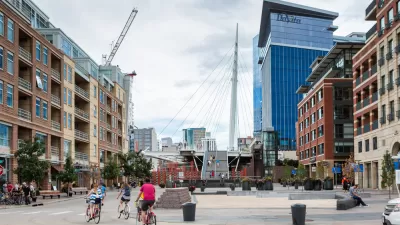A look at how the previous approval of the Hines Bergamont Transit Village project was rescinded after pressure from community activists, by real estate developer and consultant Michael Russell.

Trust is hard to come by for developers wanting to build projects in Santa Monica.
Builders recently learned that lesson the hard way when dealing with city officials and residents of the beachside community, according to real estate developer, consultant, and affordable housing advocate Michael Russell.
After approving the multimillion-dollar Hines Bergamont Transit Village development project earlier this year, the City Council recently changed course and voted 4-3 to rescind the approval. Community activists who objected to the project led an effort to get the approval reversed, writes Russell.
“Because the opposition collected at least 6,500 valid signatures — roughly 10 percent of the registered voters in Santa Monica — the City Council was required to reverse its decision or place the matter before the voters, either in a special election or in November.”
Developers work diligently to meet community demands but often feel like they are in a battle against NIMBYism they can’t win, Russell contends.
“If, as the landowner, you follow all the rules, there is an expectation that the process will yield a vote and, in most cases, a positive vote. If the city council takes a vote and it is positive, there is an expectation that that vote means something. Otherwise, as landowners, we need to give councilmembers lie detector tests.”
Russell goes on to chart the project’s progress and subsequent stalling.
FULL STORY: You Cannot Trust Santa Monica

Study: Maui’s Plan to Convert Vacation Rentals to Long-Term Housing Could Cause Nearly $1 Billion Economic Loss
The plan would reduce visitor accommodation by 25,% resulting in 1,900 jobs lost.

North Texas Transit Leaders Tout Benefits of TOD for Growing Region
At a summit focused on transit-oriented development, policymakers discussed how North Texas’ expanded light rail system can serve as a tool for economic growth.

Why Should We Subsidize Public Transportation?
Many public transit agencies face financial stress due to rising costs, declining fare revenue, and declining subsidies. Transit advocates must provide a strong business case for increasing public transit funding.

How to Make US Trains Faster
Changes to boarding platforms and a switch to electric trains could improve U.S. passenger rail service without the added cost of high-speed rail.

Columbia’s Revitalized ‘Loop’ Is a Hub for Local Entrepreneurs
A focus on small businesses is helping a commercial corridor in Columbia, Missouri thrive.

Invasive Insect Threatens Minnesota’s Ash Forests
The Emerald Ash Borer is a rapidly spreading invasive pest threatening Minnesota’s ash trees, and homeowners are encouraged to plant diverse replacement species, avoid moving ash firewood, and monitor for signs of infestation.
Urban Design for Planners 1: Software Tools
This six-course series explores essential urban design concepts using open source software and equips planners with the tools they need to participate fully in the urban design process.
Planning for Universal Design
Learn the tools for implementing Universal Design in planning regulations.
City of Santa Clarita
Ascent Environmental
Institute for Housing and Urban Development Studies (IHS)
City of Grandview
Harvard GSD Executive Education
Toledo-Lucas County Plan Commissions
Salt Lake City
NYU Wagner Graduate School of Public Service




























